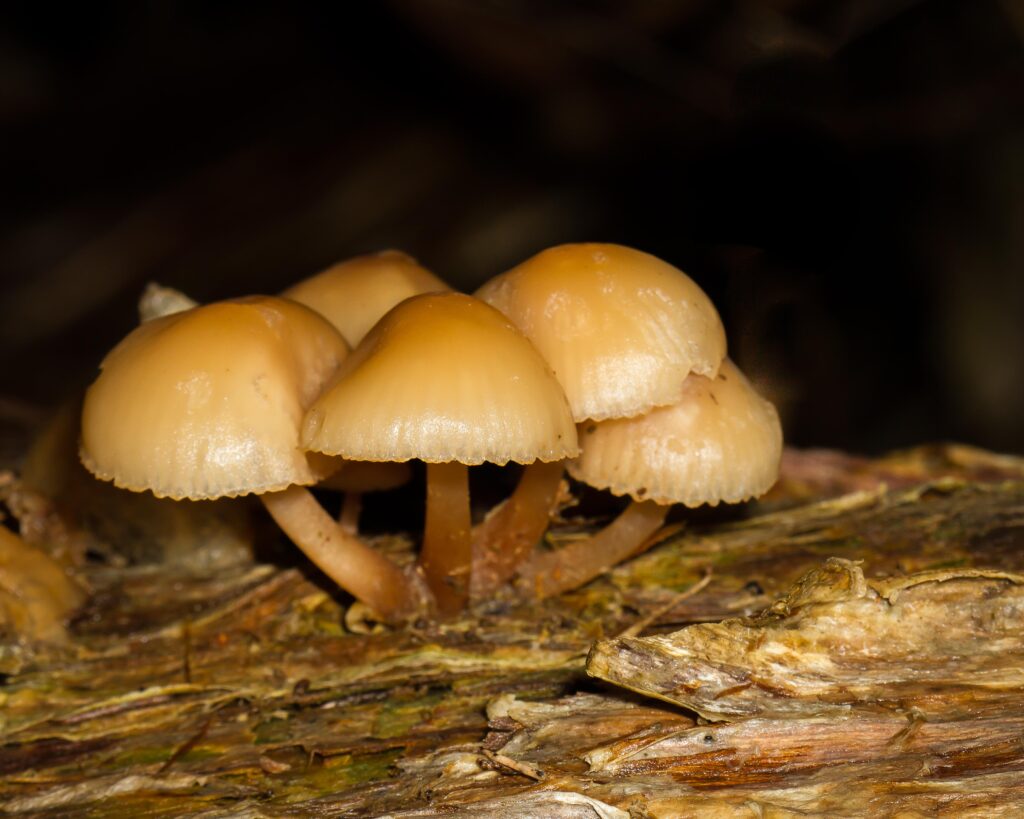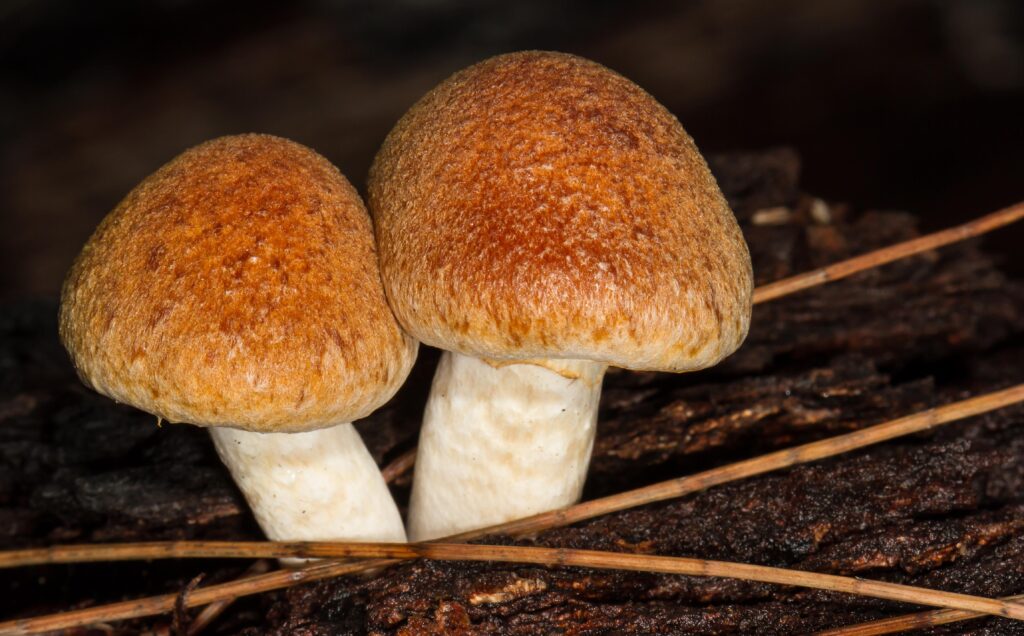KRM Branch Field Outing, 25 June 2023
The June field excursion was to Paganoni Reserve, and a great turnout of 22 members and visitors met at the car park for fungi walk. It was great to see so many people interested in fungi, especially the young children excited at the opportunity to look for toadstools. Rain during the week leading up to the walk had now cleared, which meant conditions were ideal for fungi and attendees. Although you can find fungi in all parts of the reserve, the greatest concentration is generally found within the first 100 – 200 metres after entering the reserve, in the swampy area to the right of the limestone track. The site has a lot of fallen Melaleuca rhaphiophylla and Banksia sp. that play host to many fungi.
As soon as we entered the area, we found lovely groups of Clarke’s Pixie Caps (Mycena clarkeana) and Golden Wood Fungus (Gymnopilus allantopus), and other Gymnopilus sp. on the fallen tree trunks and branches. The tiny Orange Mosscaps (Rickenella fibula) were commonly sighted where moss covered the fallen wood. A few groups of the Australian Honey Fungus (Armillaria luteobubalina) pathogen were also present. We found White Slime Moulds on the underside of the fallen trunks, where there was perpetual shade. In grassy areas, larger gilled mushrooms had emerged, though most were starting to decay, making identification difficult. Our large group was soon spread out (the photographers lagging as usual), so keeping track of all species found wasn’t easy.



Daniel Heald found a yellow Bolete that caused considerable discussion on the Western Australian Fungi Page. Still, no identification was forthcoming, and when posted on iNaturalist, it appears that it is an undescribed species. While most of us were looking downward to spot fungi, Gillian kept an eye (and ear) out for birds and compiled a list of 24 species. These included Sparrowhawk or Goshawk (heard only), Whistling Kite, Fan-tailed Cuckoo, Western Spinebill, Scarlet Robin, Western Whistler and Rufous Whistler, among the more common birds. A few of us orchid enthusiasts took a short walk to a spot where Brown-veined Shell Orchids (Pterostylis aspera) were in flower.
On the way back, we also found the Southern Diplolaena (Diplolaena dampieri) in flower, relatively early for this species to bloom. All too quickly, it was time to return to the entrance for morning tea. It had been a great morning. To see some lovely photographs from the morning walk, check out Sophie Xiang’s post on the KRMB Facebook Page at Sophie’s Photos.
Colin Prickett

